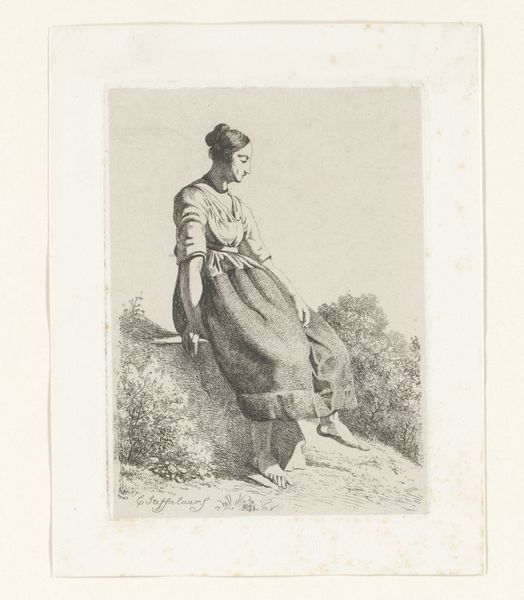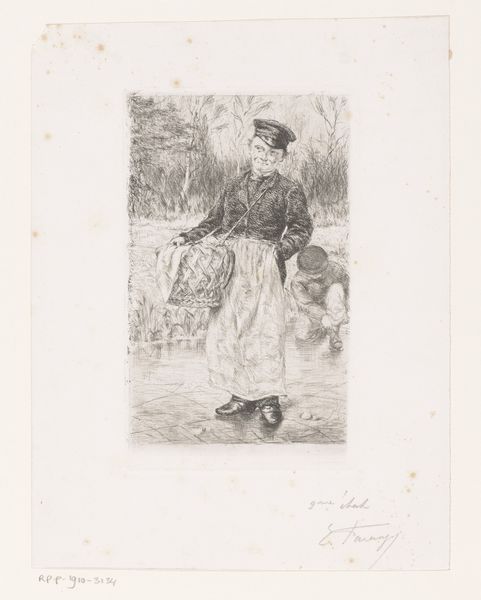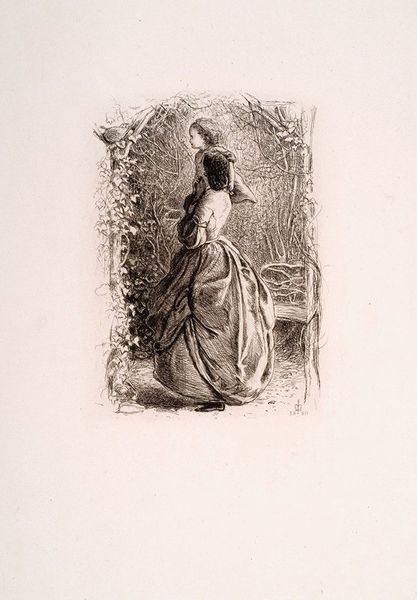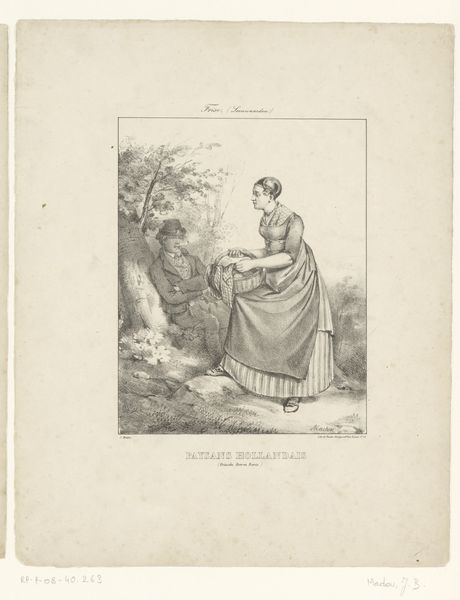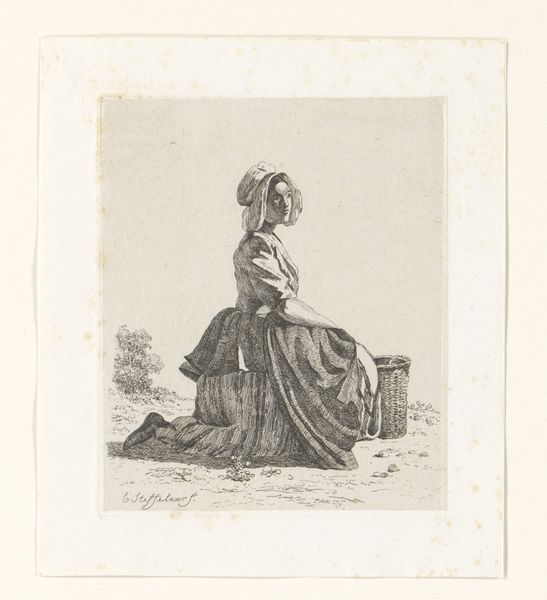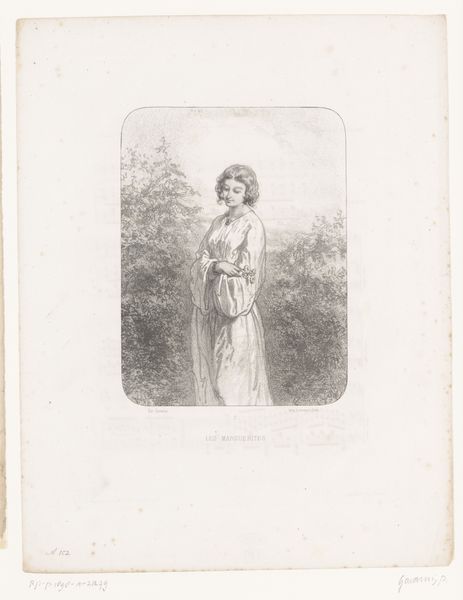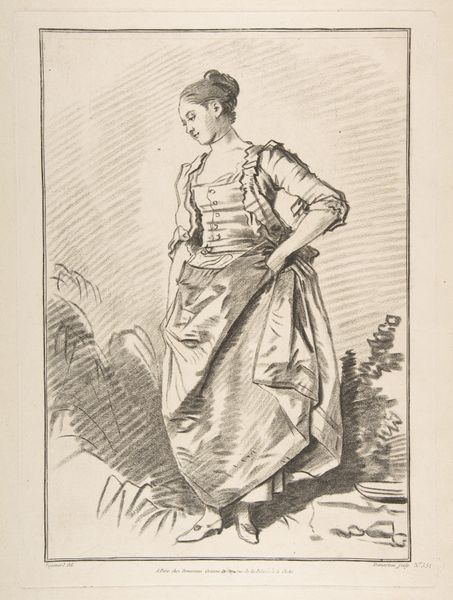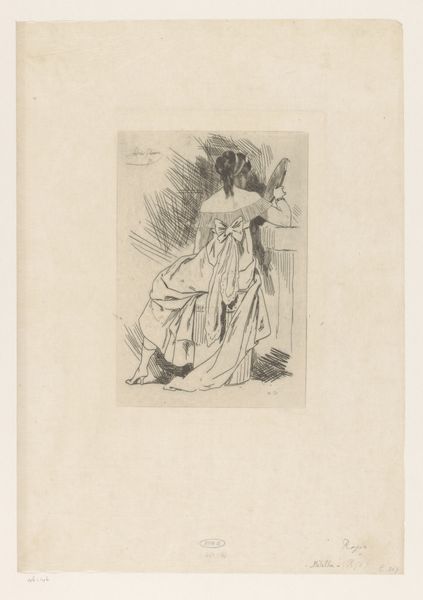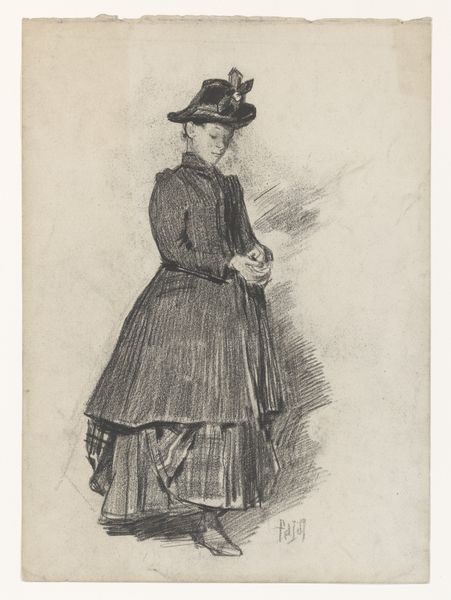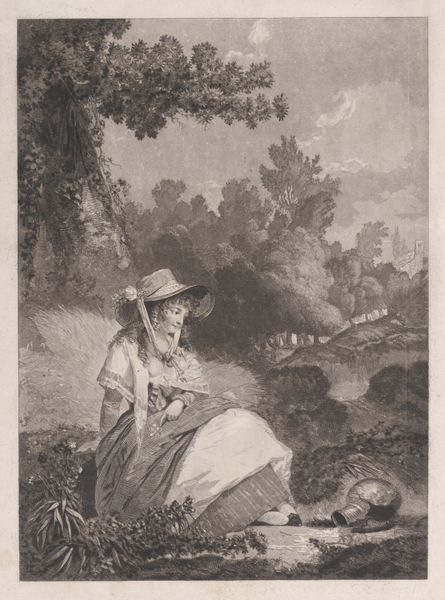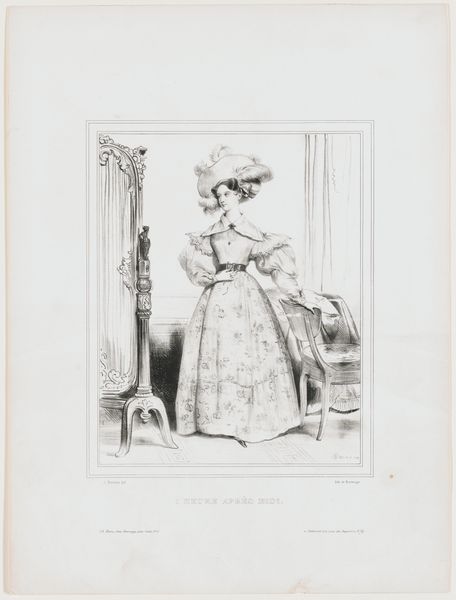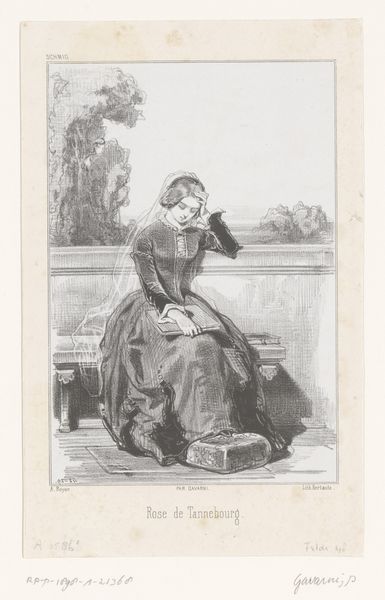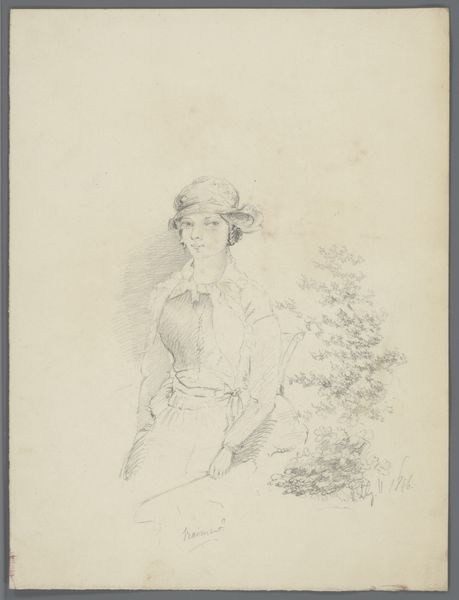
Dimensions: 256 × 188 mm (plate); 440 × 286 mm (sheet)
Copyright: Public Domain
Sir John Everett Millais created this print, “A Penny for Her Thoughts,” using etching, a printmaking technique that dates back to the early 16th century. The image begins with a polished metal plate, likely copper or zinc. The etcher coats the plate with a waxy, acid-resistant ground, then draws their composition with a sharp needle, exposing the metal. When the plate is submerged in acid, the exposed lines are eaten away, creating grooves. The longer the plate sits in acid, the deeper the lines become. The plate is then inked, and the surface wiped clean. Paper is laid on top, and run through a press, transferring the ink held in the etched lines to the paper. The resulting print, if done well, can have a delicacy and depth, with a very subtle range of tones. Prints like this one were often made after popular paintings, so that a wider public could afford to own an image of it. The labor of etching was thus connected to the wider economy of image production and consumption. By understanding the material and process of etching, we can better appreciate the role of the artist in navigating the complex world of 19th century art.
Comments
No comments
Be the first to comment and join the conversation on the ultimate creative platform.
